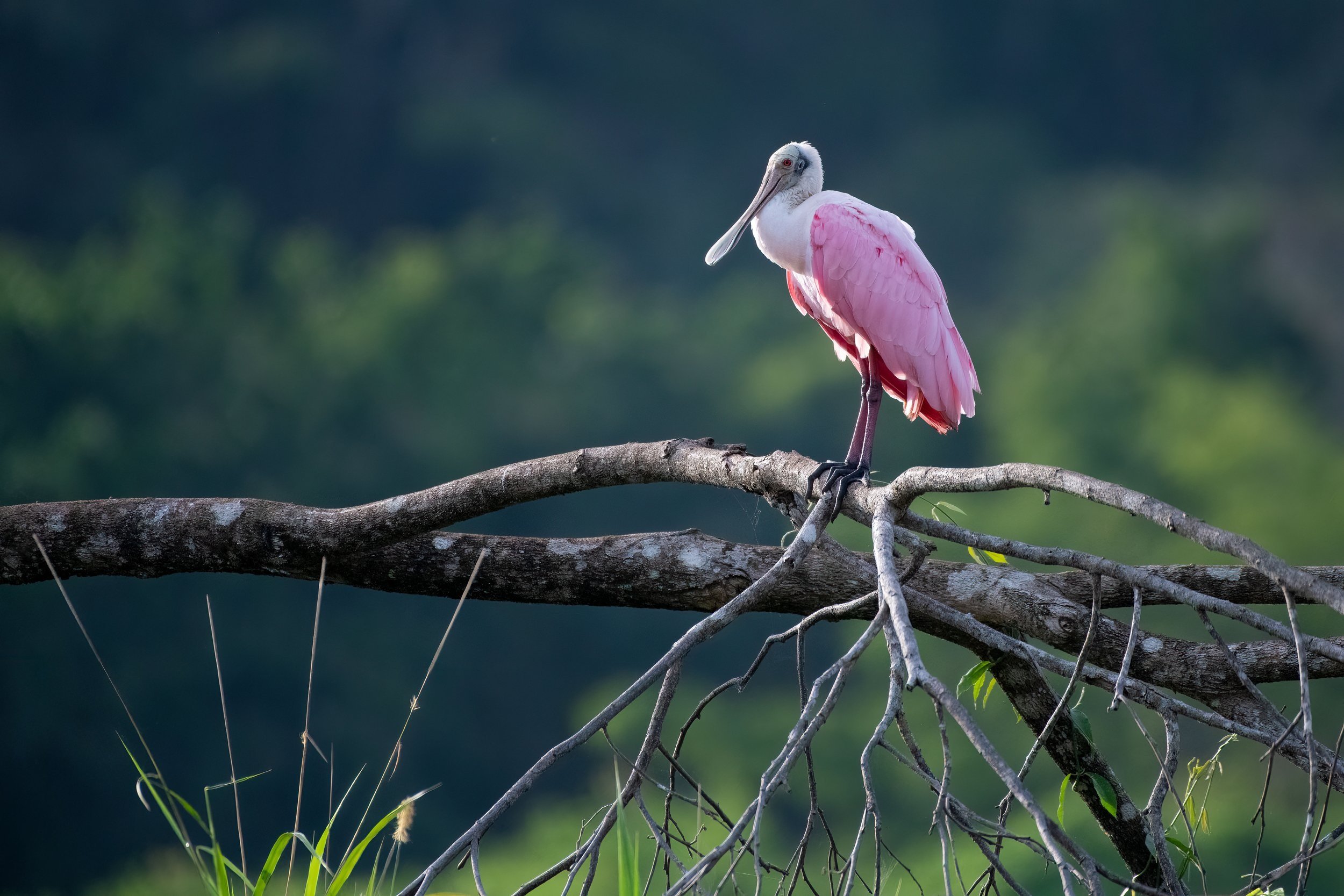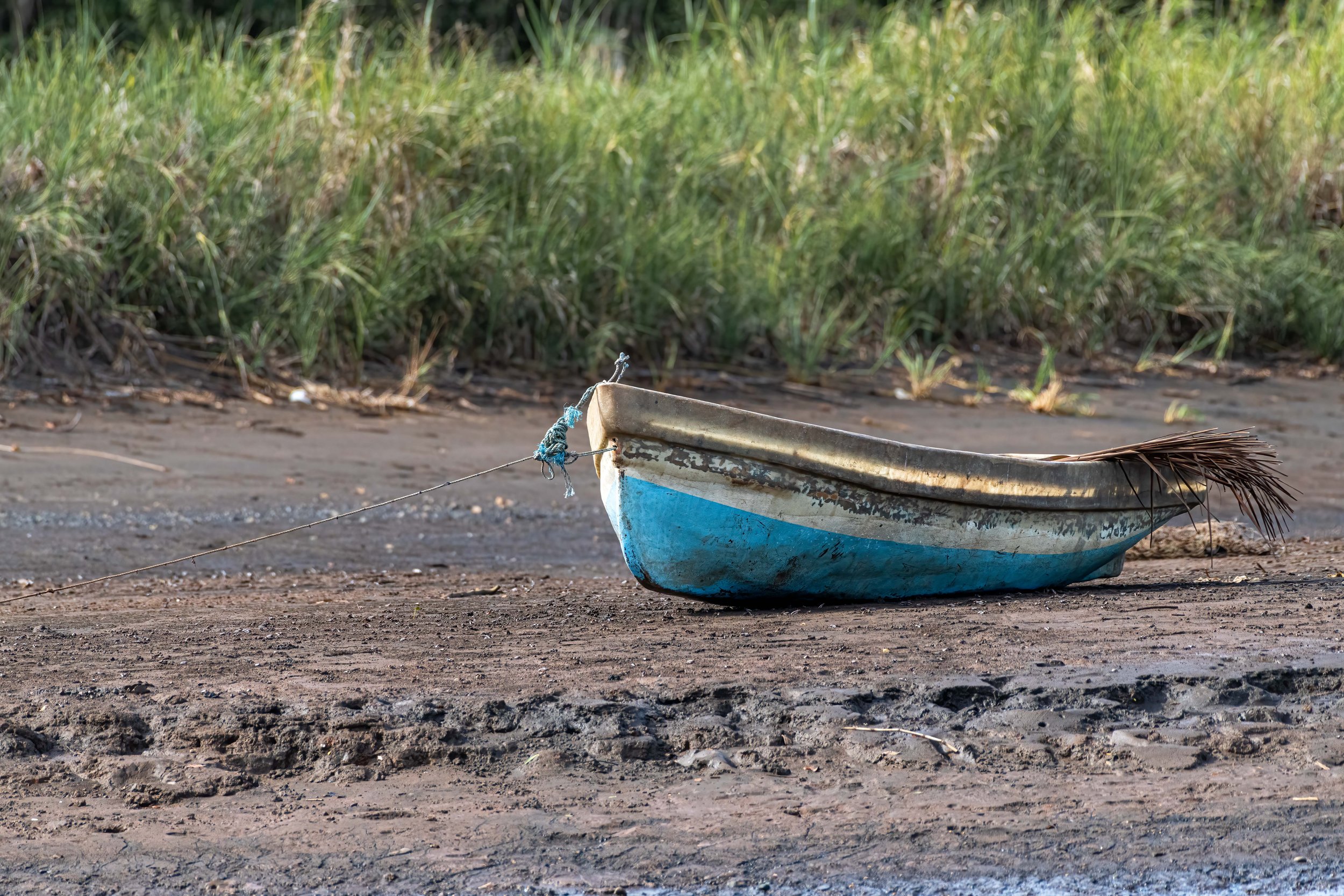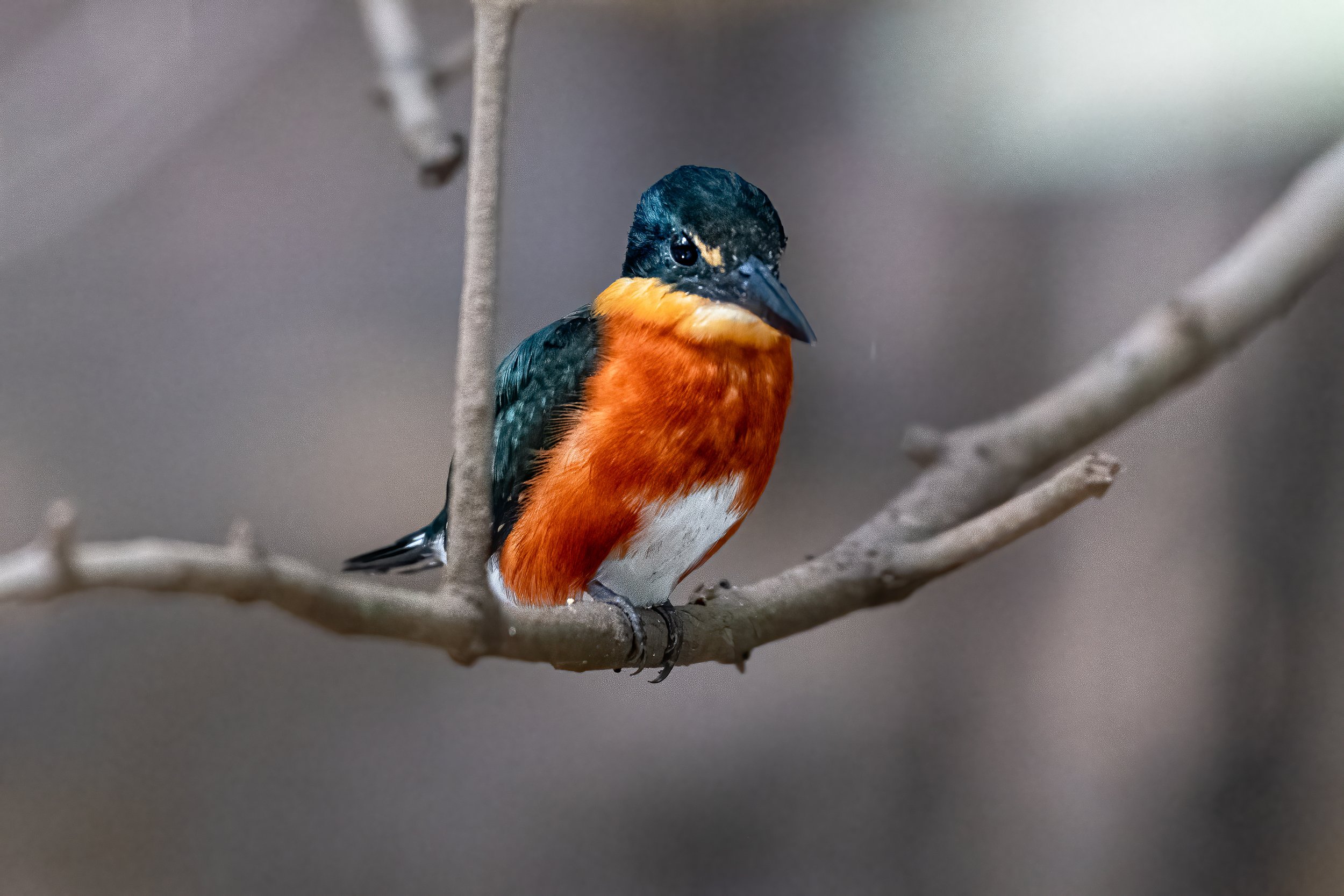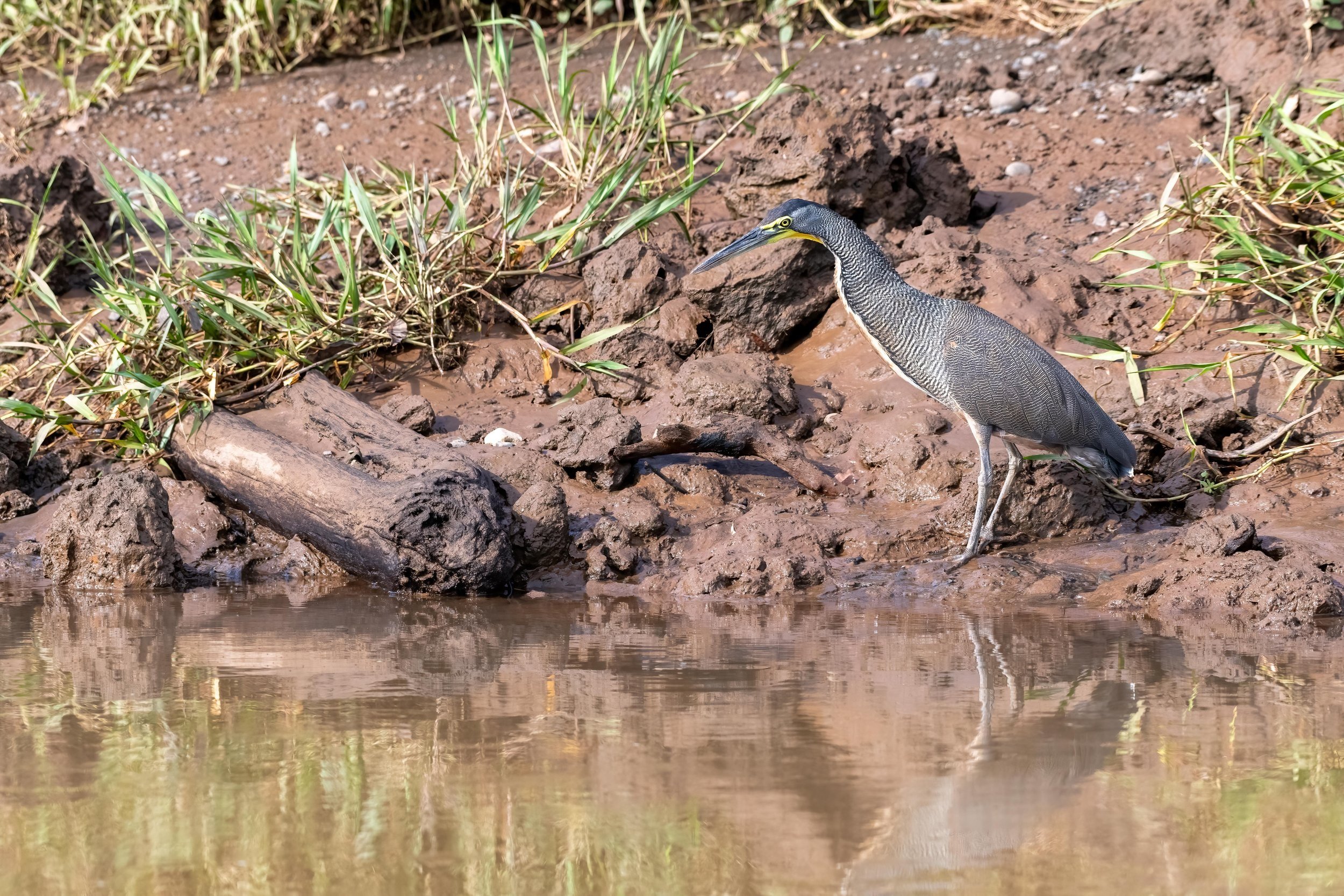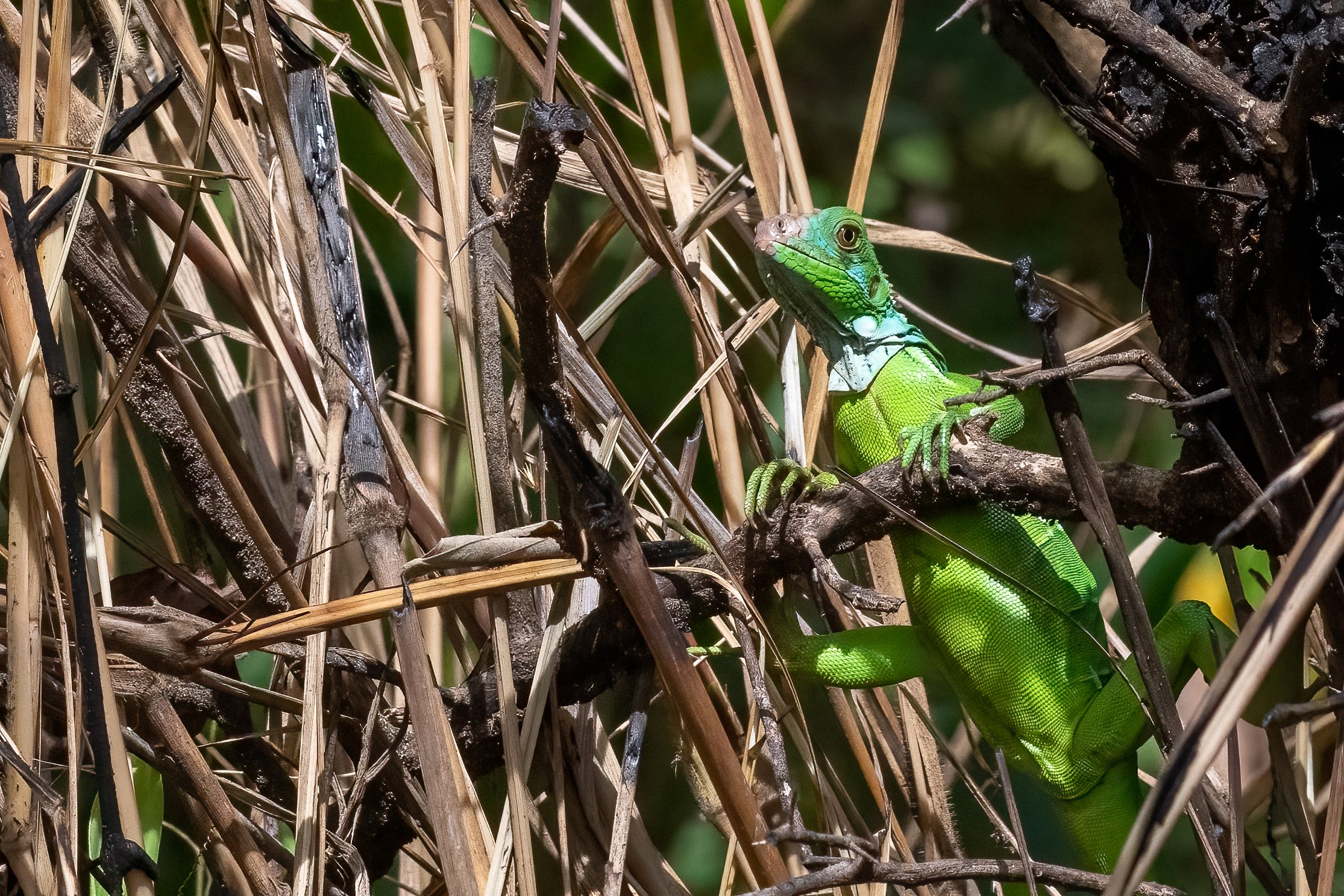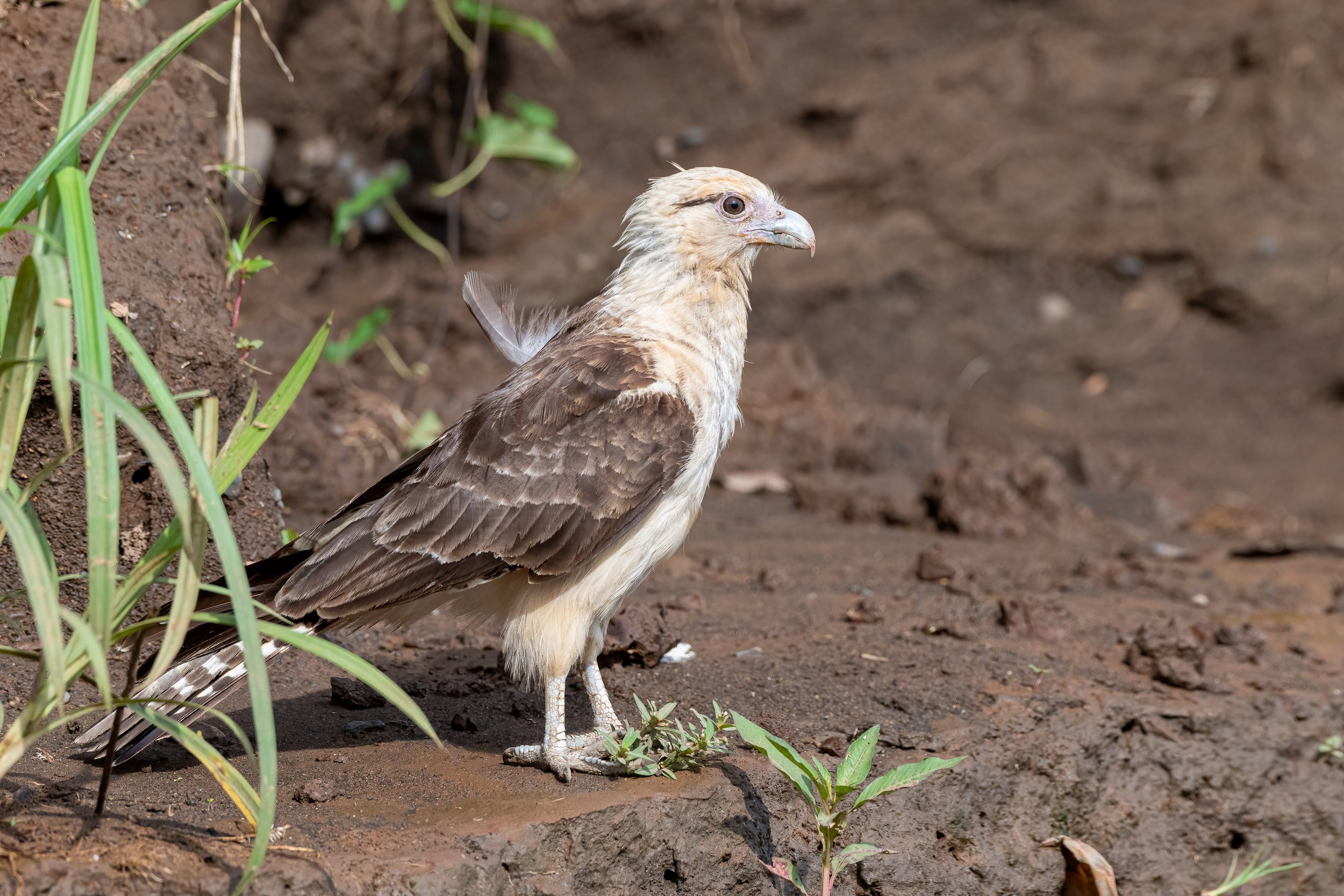Crocodiles, Caimans, and Costa Rica Birding
Abstract of Tárcoles River
Ringed kingfisher
Caiman
Just a short walk from the parking lot, our group of four made our way down a long wood-planked ramp to board our chartered river-boat. My first peek of the Grande de Tárcoles River or as the locals call it, “Tárcoles,” flows south-westerly into the Gulf of Nicoya on the Pacific coast of Costa Rica. The Tárcoles, with its rust-colored water, has wide muddy shores on both sides.
In the distance, egrets and herons peck at the sand and turn over twigs and dead leaves while hunting for insects and small reptiles. As the boat slowly broke away from the shore, we headed into the sun. Soft morning light gently lit the tall grasses of the marshes that fill in the spaces between the river and the rainforest.
The marshes are essential habitats for wading birds, waterfowl, and raptors, and reptiles such as iguanas, caiman, basilisks, and the curious and slow-moving yet impressive American crocodiles.
Turquoise-browed motmot
Following the river, we cruised slowly leaving no wake in our path. A sighting of a small caiman lying on the muddy banks was a great start to the morning. As we approached him, he opened his mouth revealing a healthy row of teeth; a perfect action pose and an exciting moment to witness. Common in Costa Rica, caimans resemble small crocodiles but are actually more closely related to alligators.
Our guide scanned the river with his binoculars and expertly pointed out the raptors circling above; several different hawks and vultures, were quickly identified. Tree stumps and low-hanging branches made good perches for Yellow-headed Caracaras and Common Black Hawks. Farther down the river, our guide spotted a Laughing Falcon, a “lifer,” so it was particularly exciting.
It was interesting to see birds that I was already familiar with like the Great Egret, Roseate Spoonbill, and Turkey vultures but our first kingfisher sighting captivated my attention. The Ringed Kingfisher, largest of the kingfishers, perched out in the open on a thin branch, his blue-gray feathers wet and slicked back from his last dive and his bill filled with the morning’s catch. Kingfisher calls are a combination of loud clicks and rattles, a high-pitched yet distinct song for a rather small bird helps you spot one in the tangled mangroves. Our guide was able to find a Green Kingfisher and the elusive American Pygmy Kingfisher, accounting for all three of the kingfishers that frequent the area.
Common Basilisk
Our time on the Tárcoles flew by, and as the morning light grew harsher and the heat began to rise, we made our way back to our starting point. Outside of a zoo, I’d never seen a crocodile. Our boat captain gave them a lot of space as we slowly cruised past them, and as we passed the largest American crocodile of the morning, the captain turned off the engine. This gentle giant engaged me in a stare-down as he swam directly toward us. He was a large, slow-moving beast with a scaly hide, yet he unnervingly remained focused on us. The guide suggested he was at least 14-15 feet long. As the crocodile sidled alongside our boat; I comfortably and safely photographed him at my leisure. A bit unsettling yet very exciting to see him
within arm’s reach.
The waters of the Tárcoles are the lifeline for the wildlife and the local fishermen. Birders and photographers scour the banks with binoculars and long lenses, and while there are never any guarantees in wildlife photography, and birds are never cooperative subjects, the dynamic Tárcoles provided me with exciting glimpses of many new “lifers,” adding to a bird list that continues to grow with every new place I visit in Costa Rica.
There’s no substitute for seeing a place for yourself, but for now, I hope that you enjoy my video on YouTube.

